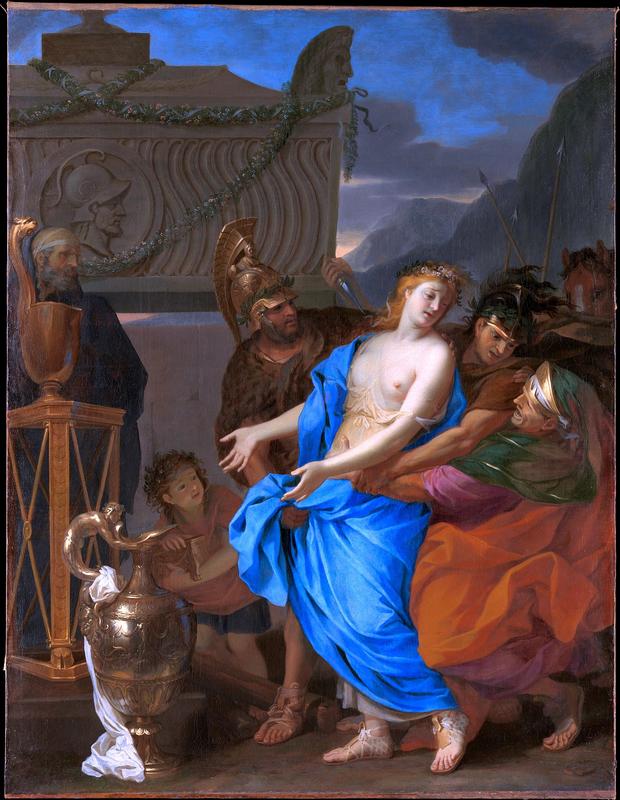More about The Sacrifice of Polyxena
- All
- Info
- Shop

Sr. Editor
Charles Le Brun's painting of the Sacrifice of Polyxena shows up out of nowhere!
So Polyxena and her brother are out fetching a pail of water when Achilles randomly shows up and gets a little stabby with brother dearest. Achilles is all "Damn, this girl is FINE" and tells Polyxena his one weakness. Polyxena runs off to her other brothers to tell them about her new boyfriend Achilles, that sweet hunk of man, and something about an ankle. The brothers naturally take revenge for their fallen sibling and Polyxena feels pretty stupid. In response, Polyxena did one of two things: She killed herself out of guilt for betraying Achilles' secret OR she was "persuaded" by Achilles' ghost to offer herself up as a human sacrifice so that the Greeks would have wind to sail back home. The second scenario is shown in the painting where she carefully clothed herself so that when Achilles' son, Neoptolemus, slit her throat she wouldn't be naked as she bled out.
Le Brun apparently did not hear of Polyxena's chastity and painted her like one of his French girls.
In a great case of hiding in plain sight this painting has been sitting in the Coco Chanel suite (she lived there from 1934 – 1971) at the Hotel Ritz in Paris for who knows how long. There is no record of the purchase or when it was installed.
Purchased by the Met in April 2013 for $1.8 million, three times more than estimated.
Mohamed Al Fayed, owner of the Ritz, is donating the proceeds of the sale to a foundation set up in memory of his late son Dodi, who died while in a high-speed car chase with his girlfriend, Princess Diana.
After the Met cleaned up the painting it was discovered that 6–8 inches along the top and 8–10 inches along the right side had been removed. You can see the tip of a soldier's helmet and his foot along the very edge.
Featured Content
Here is what Wikipedia says about The Sacrifice of Polyxena (Charles Le Brun)
The Sacrifice of Polyxena is a mid 17th century painting by Frenchman Charles Le Brun. Done in oil on canvas, the painting depicts the sacrifice of Polyxena, a Trojan princess killed to appease the ghost of the Greek hero Achilles, who had died in battle against the Trojans. The painting, which is in the collection of the Metropolitan Museum of Art, was well received, and is noted to have been confused with the work of master painter Nicolas Poussin.
Check out the full Wikipedia article about The Sacrifice of Polyxena (Charles Le Brun)















